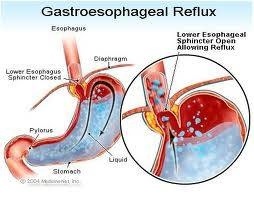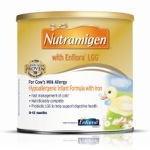http://lapsurgerybrisbane.com.au/gastro-oesophageal-reflux/
Special thanks to: lap surgery.brisbane.com.au
10 FAQs on GOR / GERD – reflux in babies
It’s just plumbing really!
1) What is GOR/GERD?
If we think of babies stomachs as being machines, we want to put fuel in and have the finished product (use your imagination at this point!) come out. We don’t want to have some of the fuel rejected and spat out, and we don’t want to have a machine which makes unhappy unhealthy noises before it’s topped-up, when it’s topped-up or anytime after it’s topped-up. These things happening are essentially in essence how reflux is.
Essentially the stomach contents (which have acid in them) flow back up into the gullet where either they cause pain from the acid, or go as far as vomiting.
It stands for Gastro-Oesophageal Reflux or Gastro-Esophageal Reflux depending on whether you are in the UK or USA.
2) Why does it happen in babies?
It can actually happen at any age, but usually is in this age group. Most of us would assume that when we eat, food passes via gravity through the gullet (oesophagus) into the stomach and then it stays there, closed off by a valve or sphincter. In fact the bowel doesn’t work this way – you can eat standing on your head for example!
All of the bowel works by gently having waves of pushing which start at the top and work right down to the anus at the end. These are the same waves that cause ‘tummy rumbles’ by pushing fluid around in the small bowel, and spasms in constipation as the bowel pushes harder and harder in waves to try to pass stools – doctors call these waves peristalsis and these ‘tummy rumbles’ borgorymi.
There is no sphincter as such, but the whole bowel contains muscle to push its contents along. Between the gullet and the stomach, the area of muscle is thicker and is effectively narrowed compared to the rest of the bowel, though it stretches when food passes through.
After birth the thickening of this seems to happen at different rates, but certainly GOR is very common in babies either as pain and/or vomiting. Interestingly later in life adults may suffer with a similar condition, hiatus hernia which means that a small amount of stomach has slipped up through the diaphragm into the chest. The symptoms are much the same.
3) What ages do you see it at?
Pretty much any age, but generally babies in the first few months of life. Inexplicably it doesn’t appear to be there from the first days or week or so. While I cannot think of an obvious explanation for this, certainly breast feeding tends to be quite small volumes at this stage so there is much less to come out. Acid secretion in the stomach may also be quite immature in the first few days or weeks.
It generally settles within a few months but most babes have long-settled by 1 year and very few continue up to their 2nd birthday.
4) My baby used to just posset or dribble. Now the vomiting is projectile – why?
Posseting is generally very normal when it is just a small amount of milk ‘dribbling’ or ‘leaking’ from the mouth. It just comes with no effort at all and no retching beforehand. Vomiting in reflux is also like this – it just comes – often with little or no warning. Some parents report hearing gurgling in the starch first or hearing milk going up int the gullet first.
If it seems to be more than that, or your baby is otherwise unwell they should be taken to see a doctor or midwife / health visitor or similar. Vomiting like this can be due to an ear or urine infection amongst others, or to something like ‘pyloric stenosis’ (a narrowing of the outlet of the stomach to the rest of the bowel which allows virtually no milk to pass through).
5) Ok, so we’ve decided it’s reflux – what are they still putting on weight?
I know! It seems like every drop of milk you made up ends up on their clothes, your clothes or the carpet. The washing pile is never-ending and they seem to ‘waste’ a lot of milk.
Somehow because it’s not the same as normal vomiting which makes you feel pale shaky and faint ( the so-called vagal response) babies are keen to feed again and get enough overall to keep on growing.
6) How about simple measures?
Propping up the mattress head end of the cot helps, as does holding the baby upright for some time after a feed to allow milk to pass through before it is regurgitated.
7) If it’s just plumbing, how do we treat it?
First, like many machines there are different ways of approaching the same thing!
In the Gaviscon advert, firemen hose down the inflamed walls of the stomach which settles it. Broadly this us how infant powered Gaviscon works. It forms a layer on top of the stomach contents to stop any acid causing inflammation. It also thickens the milk if allowed to stand initially which means that is more likely to stay down.
In these cases there needs to be a balance struck between making the milk thick enough to stay down, but thin enough to get through the teat.
Many babies become quite constipated on it and may require suppositories or laxatives to settle the constipation.
Babies can only have Gaviscon sachets and not adult liquid because the adult version has large amounts of salt in it which small babies kidneys can’t process adequately.
For many this is the mainstay of treatment.
8) What if vomiting is still a big issue?
A further thickener can be tried (instead of Gaviscon). There are options such a over-the-counter ‘Stay-down’ milk. This is much more expensive than normal milk (it’s small sales volume compared to the others). Another alternative is Carobel which comes as a powder which thickens the milk – it is the same stuff as in chocolate carob biscuits – bit like sawdust. One advantage is that you can titrate it to effect so that you can thicken the feed as much or as little as you need. The same proviso about thickness nod the teats applies as with Gaviscon.
A further alternative is a medicine that works not by thickening the milk so that it stas down, but by emptying the tummy quicker so that there’s less milk there able to be regurgitated. These medicines include Domperidone (invariably quoted as ‘Dom Perignon’!) and erythromycin. Both of these have a drawback that they are 3/4 times per day. Interestingly, the erythromycin is a normal antibiotic (often used in penicillin-allergic patients) used at a very lw dose for its side effect of driving the waves in the bowel harder.
9) What if the problem is more pain than vomiting?
In that case, if Gaviscon has not been sufficient or has been replaced by Carobel, the normal treatment would be to reduce how much acid the stomach makes since if this settles there is little or no acid to cause pain. The medications to do this are Rantidine (or Zantac) which partly reduces acid secretion but works within a few hours and Omeprazole (Losec) which markedly reduces or stops the acid production.
Ranitidine is 2/3 times per day and Omeprazole once per day.
This potentially means that a baby on Domperidone (Dom Perignon) and ranitidine may be having 7 doses of medication at different times of the day.
10) Which will work for me?
Nobody can really know that for any given baby – they’re all different. There are two strategies though – going in hard with lots of medicines and then reducing or starting with one and working up. Sometimes certain medicines are just not right for some babies so a bit of tinkering of medicines and doses may improve things.
It’s never clear when things are under control whether your baby was just outgrowing the reflux or if the medications really helped.
This leads me onto 11) Is there good evidence for this treatment approach?
In fact there is not – quite the opposite in fact
Most Paediatricians do however treat it as the constant vomiting meaning babies and mums always smell of ‘sick’ and the constant piles of washing in an already exhausted mum wears them down. In terms of the acid, babies can be completely inconsolable for hours on end – nothing the parents do help. I am constantly amazed just how much of this parents live with on a daily basis.
Bonus question 12) What about changing the milk?
There is little evidence for this, and generally parents will have already tried a number of over the counter milks and teats. There are different options – lactose free milks, soya milks (used later as thought to affect hormones), Nutramigen for those who can’t have cow’s milk, and Neocate for those who REALLY can’t have cow’s milk.
While these specialised milks are available on prescription they are very expensive, smell awful in some cases and taste even worse in others. However, for those who need them they are miraculous often.
Going for one of these means that being labelled milk-allergic means that no-one an even give your baby a chocolate button, or biscuit unless dairy-free. It’s very restrictive. For that reason, medicines are often tried first.


